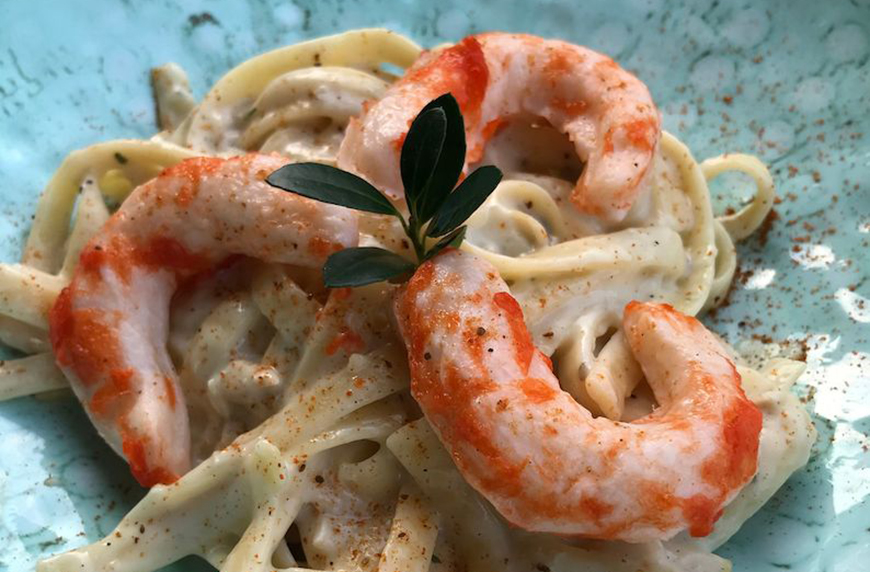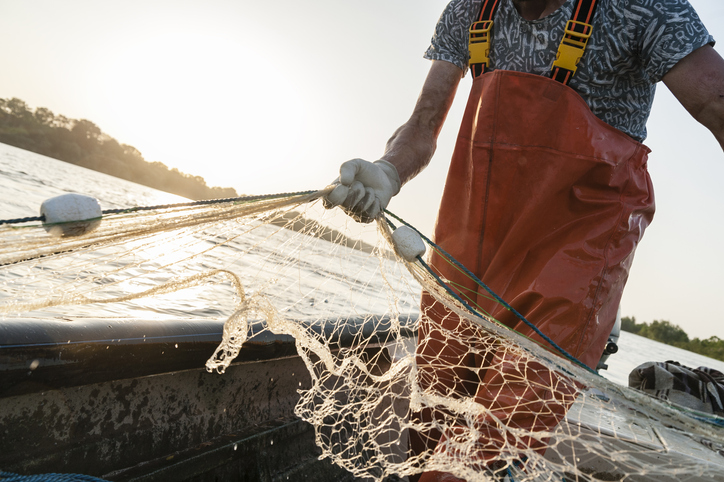Vegan shrimp has exploded in popularity recently as more people adopt plant-based diets. But what exactly is vegan shrimp? How is it made and where can you find it? This comprehensive guide will explain everything you need to know about this innovative meat alternative.
Vegan shrimp refers to shrimp-like food products made from plant-based ingredients, without any animal products. They are a type of meat substitute aimed at replicating the taste, texture, and experience of eating real shrimp.
The goal is to provide an option for those who want to avoid conventional shrimp for ethical, environmental, or health reasons. Vegan shrimp allows people to still enjoy the flavors they love while aligning with their values
Why Choose Vegan Shrimp?
There are a few key reasons why someone may opt for vegan shrimp over real shrimp:
-
Environmental impact – Shrimp farming contributes to deforestation, pollution, and habitat loss. Vegan options have a lower eco-footprint.
-
Ethical concerns – Issues like bycatch and poor treatment of shrimp on farms may lead some to seek alternatives,
-
Health – Vegan shrimp avoid contaminants sometimes found in seafood and the overuse of antibiotics on farms.
-
Allergies – Those allergic to shellfish can eat vegan shrimp worry-free.
So for many, vegan shrimp offers a more sustainable and compassionate way to enjoy a familiar flavor profile.
What Are the Main Vegan Shrimp Ingredients?
Now let’s look at what plant-based ingredients are commonly used to make vegan shrimp:
-
Konjac – This Asian root has a bouncy, chewy texture akin to shrimp. It also absorbs flavors well.
-
Tofu – When blended, fried, and seasoned, tofu can mimic the flaky texture of shrimp meat.
-
Vegetable broth – Helps impart a seafood taste.
-
Seaweed – Dried seaweed flakes lend flavor and an ocean aroma.
-
Rice – Ground rice or rice flour serves as a neutral base.
-
Potato starch – Adds binding and a velvety mouthfeel when cooked.
-
Chickpea flour – Provides body and structure that holds its shape when cooked
-
Agar agar – This vegan gelatin alternative is used to create a bouncy, shrimp-like consistency.
With the right combination of these plant proteins, starches, and seasonings, incredibly convincing vegan shrimp can be achieved!
How is Vegan Shrimp Made?
Commercial producers use proprietary techniques to craft vegan shrimp, but some common methods include:
-
Mixing plant protein powders with starch, konjac, and seaweed.
-
Marinating tofu in broths and sauces before breading and frying into “shrimp” shapes.
-
Blending and molding a dough of chickpea flour, rice flour, and xanthan gum before cooking.
-
Using agar agar to set blended mixtures into firm shrimp textures.
-
Extruding konjac and pea protein through a shaping machine for consistent shrimp sizes.
For homemade recipes, a simple blend of ingredients like hearts of palm, konjac flour, and seaweed paste can be shaped into shrimp and cooked as needed.
How Does Vegan Shrimp Taste and Feel?
When well-executed, vegan shrimp can come extremely close to the real thing in terms of taste, texture, aroma, and appearance:
-
Taste – The right balance of umami flavor, sweetness, and subtle ocean-like tastes.
-
Texture – A pleasantly bouncy, fleshy, juicy mouthfeel with a slightly slippery drag on the palate.
-
Look – Shaped into curls or chunks to mimic whole shrimp or chopped shrimp meat. Often coated in breadcrumbs.
-
Smell – Aromatic from seaweed and broths, with a faint brininess.
Of course, not all brands or homemade recipes get the shrimp flavor profile perfectly. But the top vegan shrimp options capture an uncanny similarity.
Popular Ways to Cook and Eat Vegan Shrimp
Vegan shrimp provide a versatile protein option. Here are some of the most popular ways to enjoy them:
-
Battered and fried for vegan shrimp poppers or po’ boys.
-
Mixed into vegan shrimp tacos with cabbage, salsa, and lime.
-
Stir-fried with noodles and vegetables for a quick weeknight meal.
-
Skewered and grilled for a satisfying plant-based BBQ.
-
Served over salad for a protein and fiber boost.
-
Added to pasta or rice dishes in place of animal protein.
-
Used as the “meat” in vegan shrimp soup or stew.
-
Mixed into vegan shrimp ceviche or cocktail appetizers.
So whether you want to recreate your favorite shrimp dish or find tasty new ways to enjoy this versatile ingredient, the possibilities are endless.
Top Store-Bought Vegan Shrimp Brands
If making vegan shrimp from scratch seems daunting, check out these top pre-made brands:
-
Sophie’s Kitchen – This pioneering brand offers vegan shrimp in various formats like breaded, peeled, and spiral-cut. Their shrimp is soy-free and made with konjac.
-
Gardein – Their Golden Fishless Filets make a great base for vegan shrimp scampi or stir frys when chopped. They have a crispy breadcrumb coating.
-
Quorn – Quorn recently launched their vegan Fishless Fillets, which have a tender, flaky texture like shrimp.
-
Good Catch – This brand focusing on plant-based seafood makes ready-to-eat Spicy Crab Cakes containing Fish-Free Tuno and algae protein that gives a shrimp-like flavor.
-
New Wave Foods – Their shellfish-free shrimp is still in development but will eventually provide a high-tech vegan shrimp alternative using algae and plant proteins.
Simple Vegan Shrimp Recipes to Try at Home
If you want to DIY vegan shrimp rather than buying pre-made, these recipes are simple, budget-friendly ways to start:
-
Hearts of Palm Shrimp – This 5-ingredient recipe uses sliced hearts of palm for “shrimp” dipped in vegan yogurt and breadcrumbs then baked or air-fried.
-
Tofu Shrimp Scampi – Marinated, sautéed tofu stands in for shrimp in this classic garlicky pasta dish. Just 10 ingredients required.
-
Konjac Shrimp Skewers – Chopped konjac root is seasoned with Old Bay and grilled on skewers for easy shrimp kabobs.
-
Cauliflower Shrimp Fried Rice – Riced cauliflower makes a budget-friendly base for this flavorful veggie take on fried rice.
With a few plant-based pantry staples, it’s simple to whip up satisfying vegan shrimp recipes at home.
Is Vegan Shrimp Healthy?
Vegan shrimp can be a nutritious choice as part of a balanced diet. Benefits include:
-
High in protein from plant sources like soy, chickpeas, or peas.
-
Packed with fiber from konjac root, vegetables, or whole grains.
-
Low in saturated fat and free of cholesterol found in real shrimp.
-
Eliminates concerns of contamination from pollutants or antibiotics.
-
Allergen-friendly for those avoiding shellfish or seafood.
Of course, the specific nutrition will depend on the ingredients. Check labels for any highly processed or refined ingredients when buying packaged vegan shrimp options. But overall, vegan shrimp provide a healthy alternative to animal-based shrimp.
The Future of Vegan Shrimp
The plant-based seafood market is still relatively new, but the future looks bright for even more advanced and realistic vegan shrimp options.
New startups focusing just on seafood alternatives – like Good Catch, New Wave Foods, and The Plant Based Seafood Co. – are researching ways to take the taste, texture, and nutrition of vegan shrimp to the next level. Next-gen products featuring algae protein and other marine flavors promise to deliver shrimp substitutes that are almost indistinguishable from the real thing.
Major food manufacturers are also launching their own versions of

What’s wrong with conventional shrimp?
It’s not just the US that loves to eat shrimp. In the UK, shellfish is often called prawns, even though they are actually a different species. People all over Europe, especially in the south, also love shellfish. Japan and China (the world’s largest seafood consumers) are also two massive markets for shrimp.
 Canva
Canva
India, Ecuador, Thailand, Indonesia, Bangladesh, and Vietnam, along with China, are some of the biggest producers of shrimp. The US, Japan, and the European Union are some of the biggest importers. But all of this comes at a significant environmental cost.
Most of Vietnam’s mangrove forests have been cut down in the last 30 years or so because of shrimp farming. From 1975 to 2004, shrimp farms are thought to have destroyed about 50 to 65 percent of Thailand’s mangroves.
Mangroves, which are semi-aquatic trees that grow in water near the shore, are very important in the fight against climate change because they are very good at storing carbon.
But the world has already lost 35% of them to shrimp farming, other types of farming, and the timber industry.
The process of cutting down mangroves also releases a lot of carbon dioxide—one study says more than the whole country of Myanmar. Because of this effect, more research shows that eating one kilogram of shrimp could cause four times as many greenhouse gas emissions as eating the same amount of beef.
Around 90% of the shrimp on the market in the US comes from farms in Asia or Central America. However, wild shrimp fishing is still a big business, even though it’s going down. In 2019, for example, Georgia fishers caught more than 2. 6 million pounds of shrimp. But this kind of shrimping also comes with its own set of environmental problems.
 Getty
Getty
To catch wild shrimp, trawlers drag nets across the bottom of the ocean. But because they can’t tell the difference between a shrimp and another marine animal, they catch a lot of other animals as well. According to the Turtle Island Restoration Network, shrimp nets are the number one killer of sea turtles.
All environmental problems aside, there is another big problem with the shrimp industry: animal sentience.
But on farms, they are often subjected to brutal mutilations, like eyestalk ablation. This is when the eyestalks of a breeding shrimp or prawn are cut off to make the animal’s ovaries work better and lay more eggs.
A non-profit group called Crustacean Compassion works to protect the well-being of animals like crabs, lobsters, and shrimp. They say that this practice is “a violent solution to the fertility problems caused by captive conditions.” It says that the process is not only painful but also changes the way shrimp sense things and their immune systems.
3 Vegan shrimp with vital wheat gluten
Packed with protein, vital wheat gluten (the basis of seitan) offers a meaty texture to this shrimp recipe. There is a hint of seafood flavor from the Old Bay seasoning, but the real fishy taste comes from the kelp, which is a type of seaweed. This is a great recipe for those who prefer to use the air fryer over conventional methods. Get the recipe.
Vegan Shrimp that tastes, feels and smells like real thing. Gluten free, Soy free. ヴィーガン海老 えび エビ 素蝦
How do you make shrimp vegan?
to prepare the vegan shrimp Place several inches of oil into a small cast iron pot or deep fryer and heat to 325-350 degrees. Batter the vegan shrimp in small batches (I did them 3 or 4 at a time.) First, remove a mushroom from the water, press Drop the mushrooms into the hot oil and fry until
What is vegan shrimp made of?
What is Vegan Shrimp Made of? The major component in this vegan shrimp is Konjac (pronounced kon-jack) root, with the addition of starches, spices, and paprika for colour. Konjac is the abbreviated name for an East Asian root vegetable that produces an edible tuber. It’s also known as devil’s tongue, voodoo lily, and elephant yam.
Does a vegetarian eat shrimp?
vegetarians made a vow not to eat their fellow creatures a shrimp is alive it has eaten things while it was alive a vegetarian wishes to remove themselves from this sort of food chain by only eating plants
